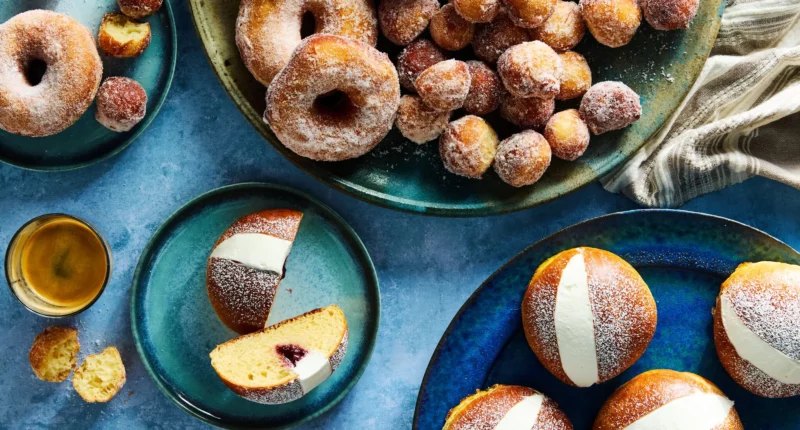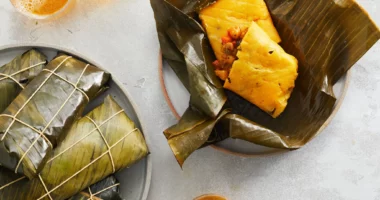Once you make your doughnuts with brioche dough, Yewande Komolafe writes, you may never go back.
As a young pastry cook in the early 2000s, my 2 p.m. shift at the restaurant Tatin in Baltimore would begin with a list of doughs to prepare for the next morning.
I would start with ciabatta, a wet, almost runny dough with a seemingly endless pull. It would eventually be baked off, then cut into thin slices to adorn the bread baskets.
The breadstick dough, a simple but dense monster, was rolled out into sheets, sprinkled with herbs and cheese, then cut and shaped into long, skinny sticks.
And then there was the brioche dough, delicate yet sturdy, prickly and requiring your full attention at every step. It was one of the first bread doughs I came to really love.
I can awe over what I enjoy about preparing rich, shape-shifting brioche dough — the bubbling and foaming of the yeast, proof of life; the stretch of the dough after a few minutes of kneading; the way the gluten strands surround the pats of softened butter, like gloved fingers wrapped comfortably around a warm mug. I have come to rely on this dough for a host of pastries for special occasions and holidays. But I’m actually here to talk about how doughnuts made from brioche dough may be the only doughnuts you’ll ever need to make.
Recipe: Sugared Doughnuts

Even if, like me, you rarely crave doughnuts, a perfect one can elicit cherished food memories. Perhaps beignets, zeppole or puff puff connect you to a time and place where excess was a virtue. If that’s you, you may find bliss in brioche, whether fried or even baked. While you can achieve a soft and crisp doughnut with a variety of different doughs, the softness in these seemed almost ethereal. The taste of butter lingers in every bite, along with a slight tang from the yeasted dough.
I confess that, initially, it felt like it went against common sense to drop a dough, rather rich with layers of butter, into hot oil. But into the fryer it went. Far from becoming a greasy puddle, as I assumed, these doughnuts emerged with almost feathery middles and a deep golden-brown crust. This will be your reward, too.
Recipe: Maritozzi (Sweet Cream Buns)


For those who are intimidated by the fryer, and for whom a baked, buttery bread offers greater appeal, brioche dough will impress in its more traditional baked form. My recipe for maritozzi, traditional Italian treats of soft buns filled with a sweet cream and sometimes a fruit jam, is a wonderful starting point.
Whether you are looking to serve these doughnuts at a holiday brunch or alongside a cup of tea for one, feel free to experiment. Toss the fried doughnuts in a spice blend of your choosing or use your favorite jam for the maritozzi.
Go for what inspires you the most.






